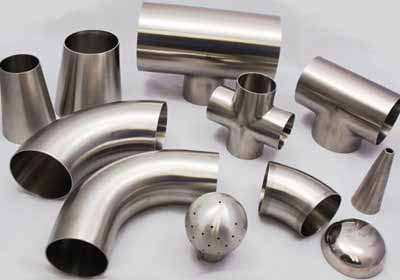When it comes to selecting materials for piping systems, corrosion resistance is a key factor—especially in environments where exposure to harsh chemicals, moisture, and extreme temperatures is common. Among the many options available, Stainless Steel 304L Buttweld Fittings stand out due to their excellent ability to resist corrosion. This blog dives into the corrosion resistance of these fittings and explains why they are a top choice for various industrial applications.
Â
Understanding Stainless Steel 304L
Stainless Steel 304L is a low-carbon version of the widely used Stainless Steel 304. The reduced carbon content improves its weldability and minimizes the risk of carbide precipitation during welding. This makes 304L more resistant to corrosion after welding compared to standard 304. Its combination of strength and corrosion resistance makes it ideal for use in demanding environments across multiple industries.
Â
What Are Buttweld Fittings?
Buttweld fittings are essential components used to connect pipes in a seamless and durable way. They include elbows, tees, reducers, and caps, which allow for the creation and modification of piping systems. The buttwelding process involves aligning the ends of the pipes and fittings and welding them together, resulting in a strong and continuous joint. This method ensures that the pipeline remains intact and leak-free, making it a preferred option in critical applications.
Â
Corrosion Resistance of Stainless Steel 304L Buttweld Fittings
Â
-
General Corrosion Resistance
Stainless Steel 304L is well-known for its strong resistance to general corrosion. It contains a high amount of chromium, which forms a protective oxide layer on the surface. This oxide layer acts as a barrier against corrosive agents like moisture, air, and mild chemicals. As a result, 304L buttweld fittings can maintain their structural integrity in a variety of environments without significant degradation.
Â
-
Resistance to Oxidation
In high-temperature settings, oxidation is a major concern. Stainless Steel 304L Buttweld Fittings are designed to resist oxidation at elevated temperatures, making them suitable for use in hot gas or liquid environments. The chromium content in the alloy helps form a stable oxide layer that protects the material from oxidizing, ensuring long-term durability and performance in high-temperature applications. This makes them a popular choice in industries such as power generation and chemical processing.
Â
-
Resistance to Chemical Corrosion
While Stainless Steel 304L is resistant to many chemicals, it has limitations in certain aggressive environments. It performs well with mild acids, alkalis, and organic substances, but may be vulnerable to chloride-induced corrosion, such as pitting and crevice corrosion. In environments with high chloride levels—like seawater or certain industrial chemicals—it’s often better to use Stainless Steel 316L, which offers improved resistance to such conditions.
Â
-
Crevice and Pitting Corrosion
Crevice and pitting corrosion are localized forms of corrosion that can occur in stagnant or low-flow environments. While 304L is generally resistant to these types of corrosion, it's not completely immune. Proper design and maintenance are crucial to minimize risks, especially in areas where fluids may remain stagnant or where confined spaces exist. Regular inspections and cleaning can help preserve the integrity of the fittings over time.
Â
Applications and Maintenance
Â
-
Common Applications Across Industries
Stainless Steel 304L Buttweld Fittings are widely used in various sectors, including chemical processing, food and beverage production, pharmaceutical manufacturing, and marine environments. Their ability to withstand harsh chemicals and high temperatures makes them a versatile and reliable choice for many demanding applications. Whether in a factory setting or an offshore platform, these fittings provide consistent performance and durability.
Â
-
Maintenance Tips for Longevity
Regular maintenance is essential to ensure the long-term performance of Stainless Steel 304L Buttweld Fittings. Routine cleaning to remove contaminants, monitoring for signs of localized corrosion, and ensuring proper system design all play a role in maintaining their corrosion resistance. In environments with high chloride levels or other aggressive agents, additional protective measures or alternative materials may be necessary to extend the life of the fittings.
Â
Conclusion
Stainless Steel 304L Buttweld Fittings offer excellent corrosion resistance, making them a reliable choice for a wide range of industrial applications. Their ability to resist general corrosion, oxidation, and many chemicals makes them a popular option in challenging environments. However, it's important to consider the specific conditions in which they will be used and follow proper maintenance practices to ensure optimal performance. By understanding the properties of these fittings, industries can make informed decisions and select the best materials for their piping systems, ultimately improving efficiency and safety.
Â
